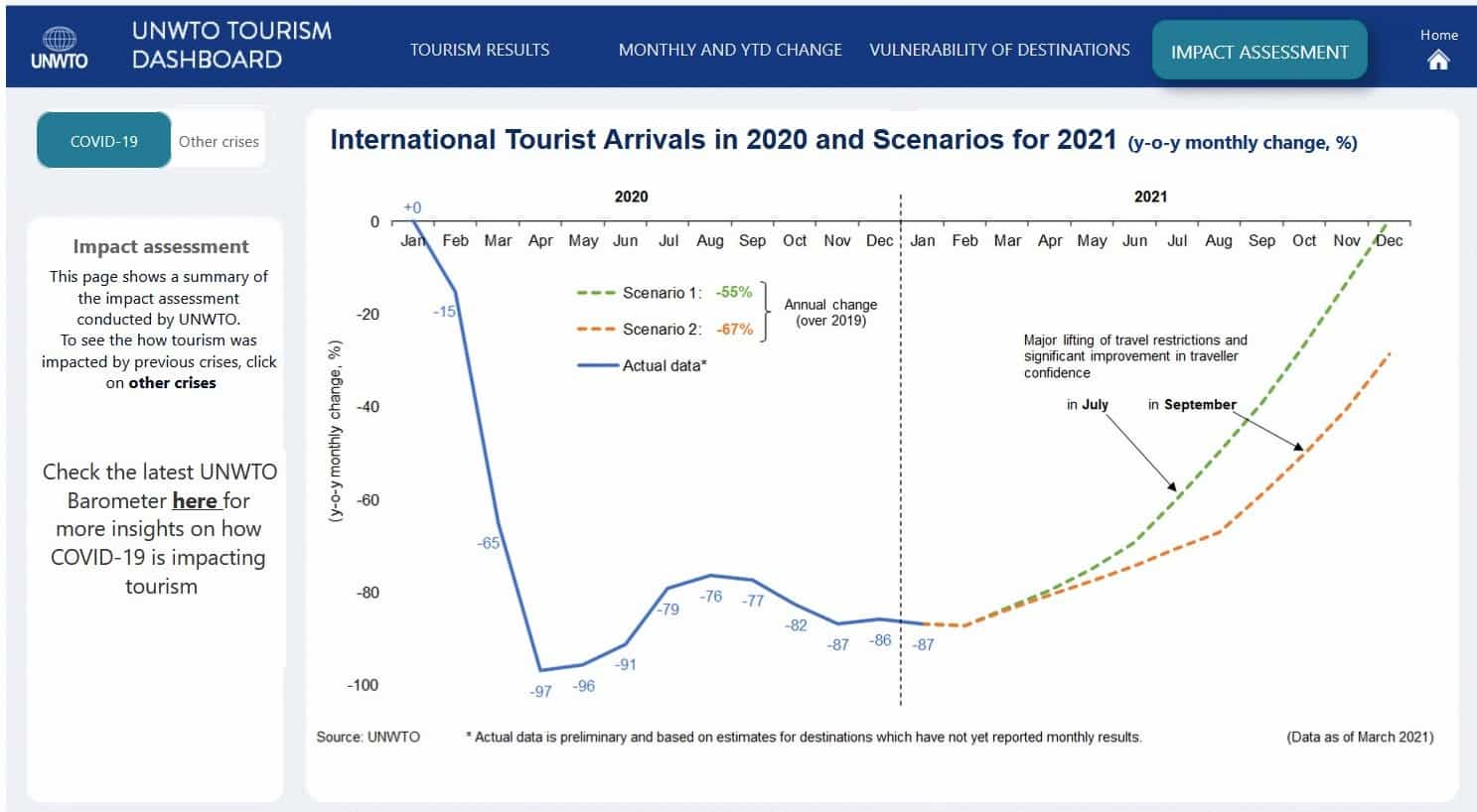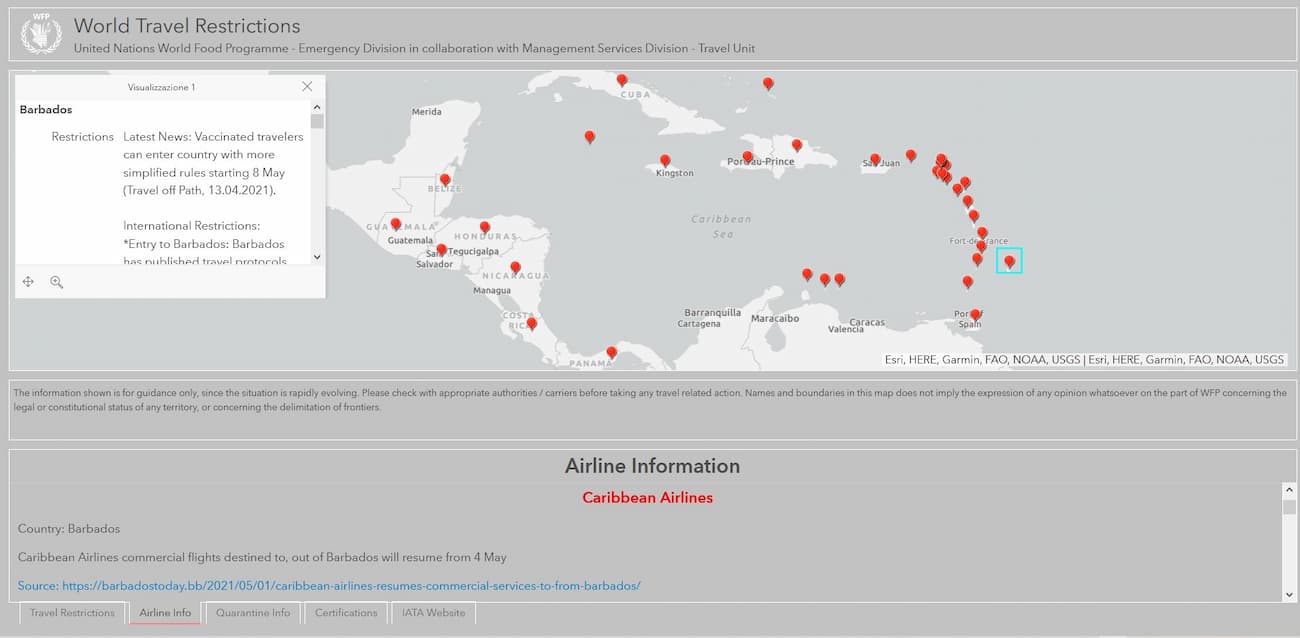5 Ways to Revive Tourism with Open Data

Summer’s approaching and with it the reopening of most leisure destinations. Find out how data-driven solutions can help the tourism industry restart safely!
In France, no month makes you dream of summer holidays more than May. The 1st, 8th, 13th and 24th are all public celebrations, allowing couples, families, and friends to spend long weekends on the coast or at country houses. According to the National Federation of Tourism Institutions (ADN), 45% of the French population will go on vacation this month, while another 72% plans to do so in the summer.

Travelling is also recovering elsewhere: The United Nations World Tourism Organization (UNWTO) estimates that global international tourist arrivals will go back to pre-Covid levels by the end of 2021 or early 2022. Hotel bookings are also on the rise, with the Middle East and Africa registering twice as many reservations as Europe and Asia-Pacific and 1.5 times more than the Americas in April.
How can the tourism industry make the most of the travel recovery while also ensuring visitor safety? Here are five data-driven ideas!
Facilitating Travel Planning
Navigating the rules imposed upon arrival to and return from various destinations across the world can be daunting for a tourist. To help potential travelers choose where to go, you can include a link to an open travel restrictions portal or integrate the data directly into your website or app.
There are several portals providing travel restrictions information and visualizations as open data. The United Nations Humanitarian Data Exchange, for example, hosts an interactive map showing travel restrictions by country and by airline. The data is updated daily by the UN World Food Program and is available for download and reuse in CSV format, as well as for integration with an ArcGIS REST API.
If you are looking for a colorful alternative, you can opt for BringBackTravel, a portal that displays tourism-related travel restrictions not only globally but also based on your countries of origin and destination. The website relies on multiple data sources, including local airports, US embassies and the International Air Transport Association (IATA) and issues daily updates on tourism reopening. The interactive map can also be easily integrated into websites and blogs by generating an HTML code.

Managing Visitor Flows
The second challenge for tourism today is to avoid overcrowding, both to avert Covid risk, as well as to minimize the negative impact of mass tourism on the environment, local communities, and attractions. Cities can turn to data solutions to encourage tourism while also keeping visitor flows under check.
In Paris and Milan, occupancy apps help tourists avoid queues and crowds indoors, thus ensuring health safety and improving visitors’ experience. Affluences, for example, allows tourists to monitor the occupancy of museums, swimming pools, and shops in real time, get predictions for successive time slots and reserve tickets, while CityMapper helps travelers find the empty sections on public transport. Occupancy data is provided by partner organizations and may also be available as open data, as it is the case for Strasbourg swimming pools and the Paris transport system.
But how to predict and manage tourist flows outdoors? A group of researchers in Kyoto, Japan, is developing a system to avoid overcrowding during the cherry blossom season and allow both visitors and residents to enjoy the city. The system will rely on multiple location data sources, including mobile phone service providers, Wi-Fi and Bluetooth sensors, tourist apps, and social media.
Local community welfare is also at the core of Tourism 4.0, a sustainable tourism initiative that developed a tool to forecast visitor flows in Slovenia. FLOWS leverages anonymized data from diverse sources, including traffic counters, open Wi-Fi networks, vignettes, and tourist tax registries, and it is interoperable with itinerary, reservation, and revenue management systems. The platform will help tourism establishments prepare for peak tourism periods and redirect visitors towards less congested areas.
Extracting Business Insights
The long hiatus endured by the travel industry offers a chance to rethink our approach to tourism. By leveraging data, tourism establishments can spot untapped markets and destinations in order to develop new ways to measure performance.
One platform allowing for these analyses is the Pacific Data Hub (PDH), the most comprehensive open data portal in the region. The portal stands out for its superb interactive map, which allows users to visualize and compare most available datasets, including those on tourists and excursionists. Thanks to this tool, I found out that among Fiji, Vanuatu and New Caledonia, Fiji attracts the most tourists, whereas New Caledonia and Vanuatu primarily welcome one-day excursionists. At the same time, Vanuatu attracts half the excursionists as New Caledonia, despite being home to an impressive coral reef. This suggests that there is untapped potential for Vanuatu to attract more visitors, for instance, by capitalizing on the Millennium Coral Reef.

The PDH also stands out because many of its tourism statistics are tied to environmental impact and Sustainable Development Goals indicators. Pacific island countries are in fact among the most vulnerable to climate change and natural disasters, so they depend on healthy marine and land ecosystems not only for esthetic appeal but also for environmental security. In other words, tourism performance in the Pacific is increasingly measured by its sustainability. Shouldn’t we do the same?
Offering Better Tourism Services
As our lives move online and mass tourism loses ground, visitors increasingly expect a personalized tourism experience at the tip of their finger. Open data can help you promote attractions and services and provide visitors with meaningful recommendations about leisure activities.
Remember Kiki’s suggestions to plan a Covid-safe vacation in the US using cities’ open data? You can do the same in Europe. Brussels, for example, made available an open data map of its murals so that visitors can walk the Comic Book Route, while Poitiers published its event agenda so that residents and tourists don’t miss a thing. The Ile-de-France region also joined the open data movement, publishing interactive maps of its remarkable gardens and natural parks.
Now imagine having all these information – itineraries, events, shops, sights, restaurants – in one place. This is the idea behind DataTourisme, the French Government’s open data portal for tourism. DataTourisme centralizes the data collected by local and regional tourism authorities, standardizes formats, and makes the information freely available for reuse. Data producers gain in visibility, while companies and public authorities can integrate data of different types and from different sources (so-called Linked Open Data) into apps and algorithms.
One popular use case for Linked Open Data are recommendation systems. A recent study shows that combining a user’s location with open data on TripAdvisor ratings, destination closing time or traffic can greatly increase the quality and accuracy of recommendations. The next step will be to develop algorithms capable of handling multiple data sources simultaneously, such as weather and multimedia data.
Empowering Tourism Professionals
None of these use cases and innovations would work without involving tourism professionals. As usual with open data, it’s not enough to publish information: you also need to train potential reusers and animate a community of data explorers, storytellers, and builders.
For this reason, the European Union’s Interreg Program finances several capacity-building initiatives around open data. ODEON, for example, aimed at improving the quality and accessibility of open data on the Mediterranean by creating a one-stop data portal and by organizing workshops, business development sessions, and matchmaking events for startups and investors in seven national hubs.
A similar initiative also exists for the Alps region. The DEAS project will boost the local data economy by developing an open data portal, as well as a methodology and a toolkit for linked open data reuse, with a particular focus on tourism and environment-related use cases.
Whatever the estimates for the 2021 holiday season, one thing is clear: data will play a key role in our transition towards safer, more personalized, and more sustainable tourism.



